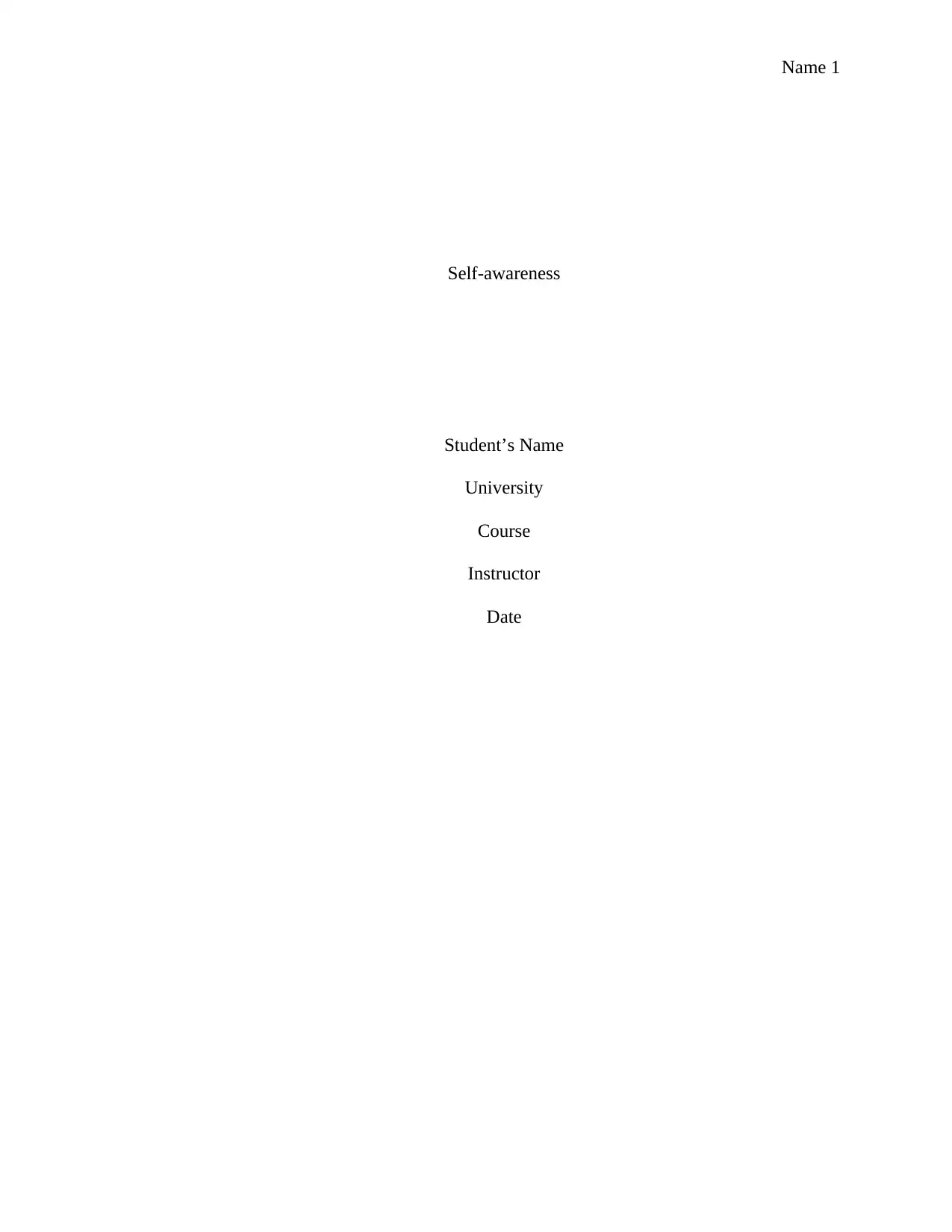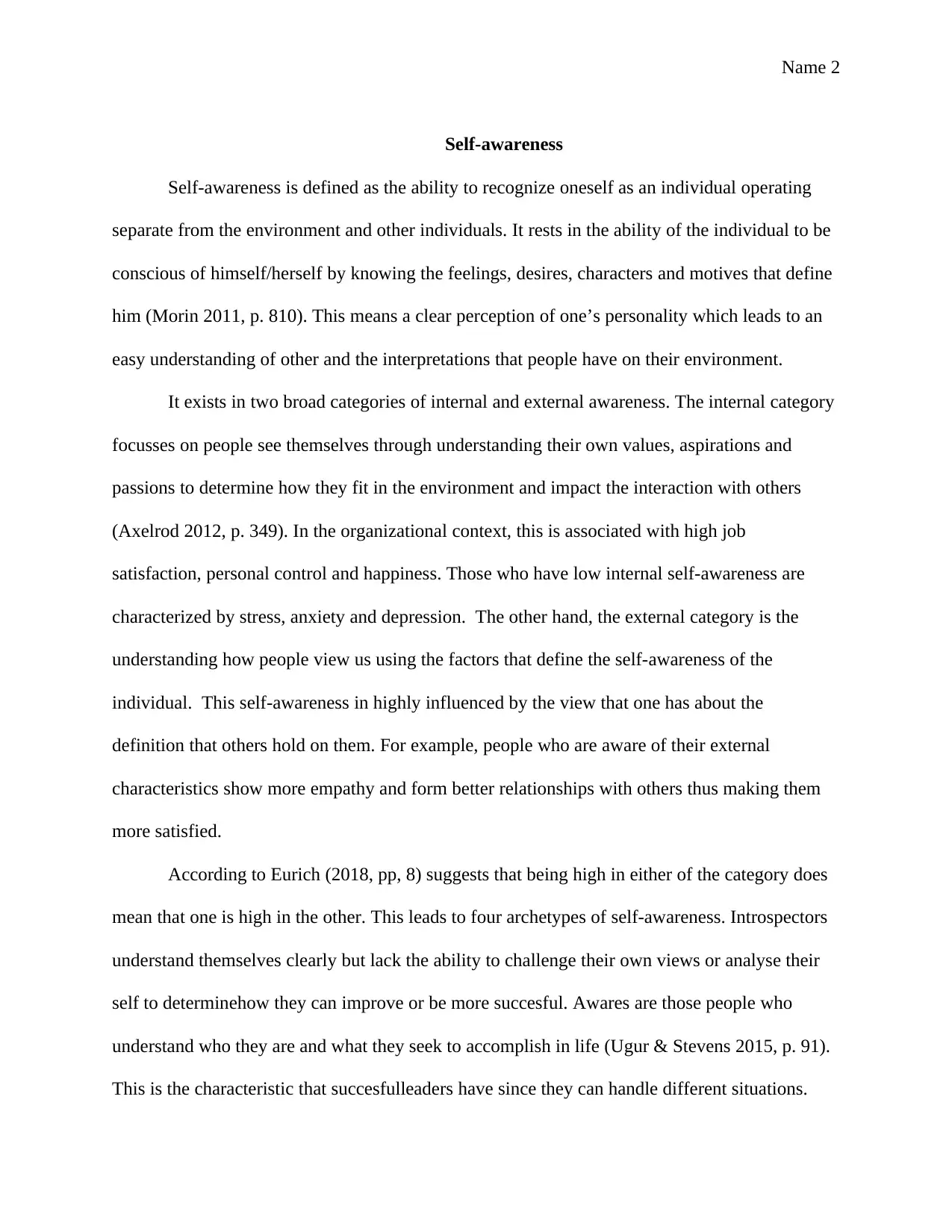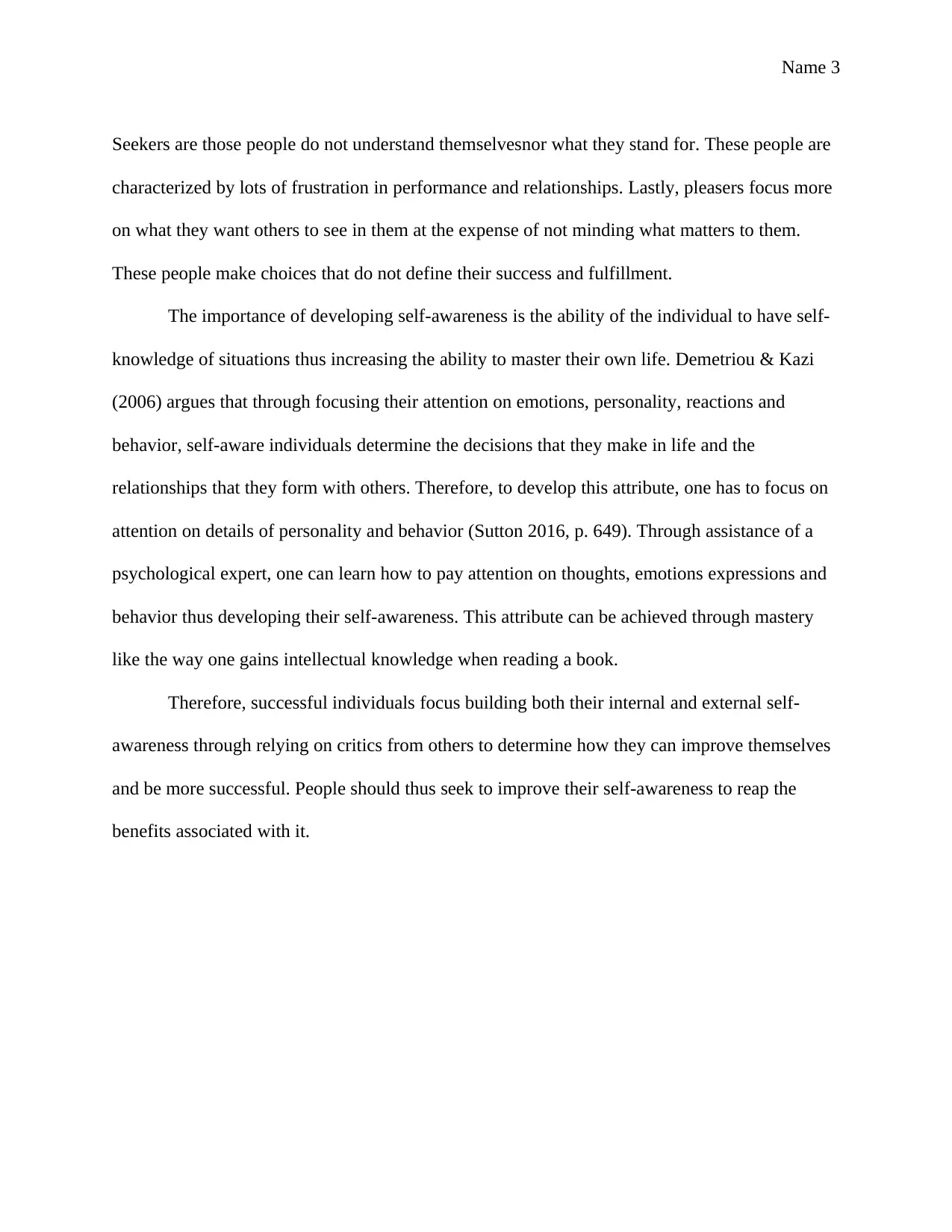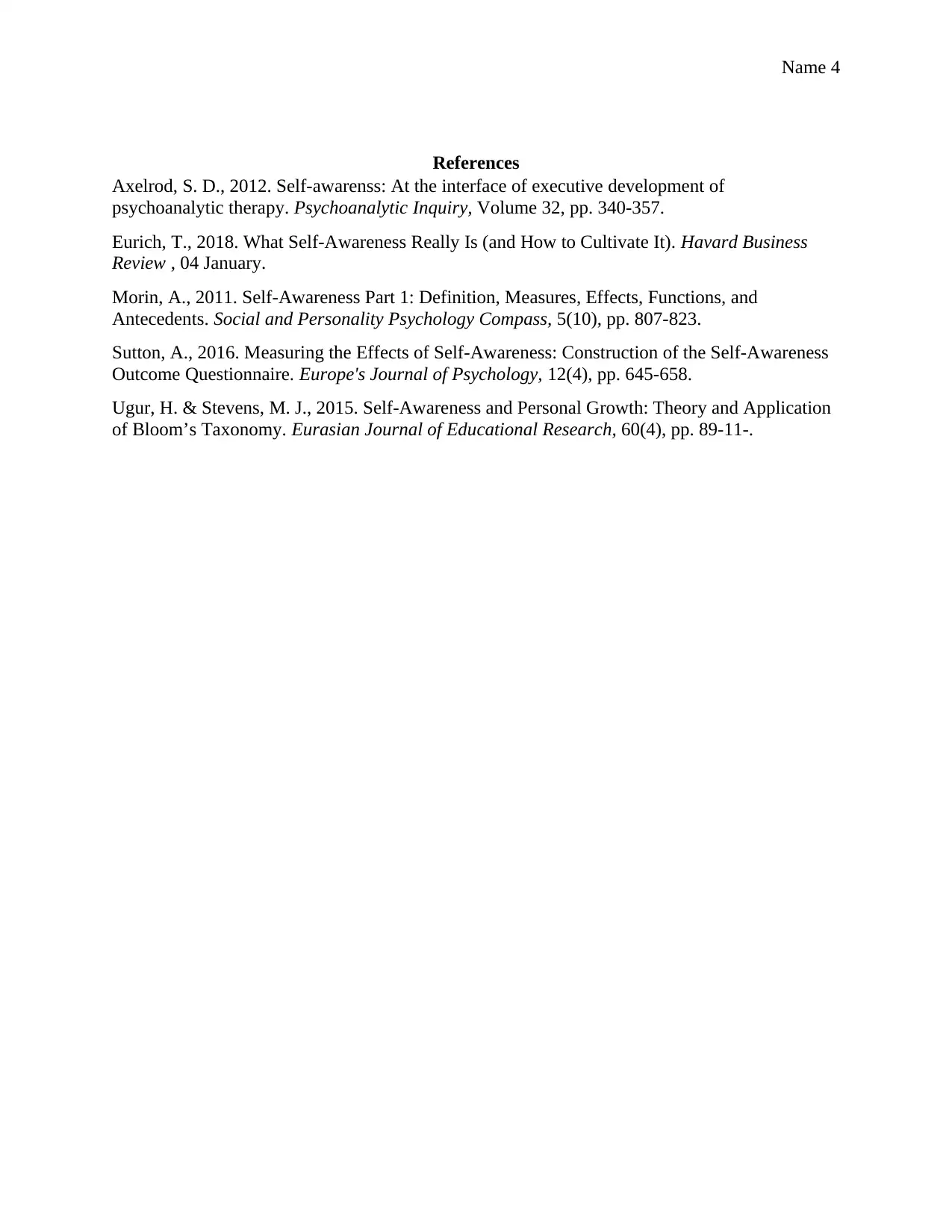Self-Awareness: Definition, Categories, Archetypes, and Development
VerifiedAdded on 2023/06/12
|4
|774
|172
Essay
AI Summary
This essay provides a comprehensive overview of self-awareness, defining it as the ability to recognize oneself as an individual separate from others and the environment. It discusses the two main categories of self-awareness: internal (understanding oneself through values and aspirations) and external (understanding how others perceive us). The essay further explores Eurich's four archetypes of self-awareness: Introspectors, Awares, Seekers, and Pleasers, highlighting the importance of developing both internal and external self-awareness for personal mastery and successful relationships. It emphasizes that self-awareness can be developed through focused attention on emotions, personality, reactions, and behavior, often with the assistance of a psychological expert, ultimately leading to improved decision-making and overall life satisfaction. Desklib offers this assignment as a resource for students.
1 out of 4











![[object Object]](/_next/static/media/star-bottom.7253800d.svg)